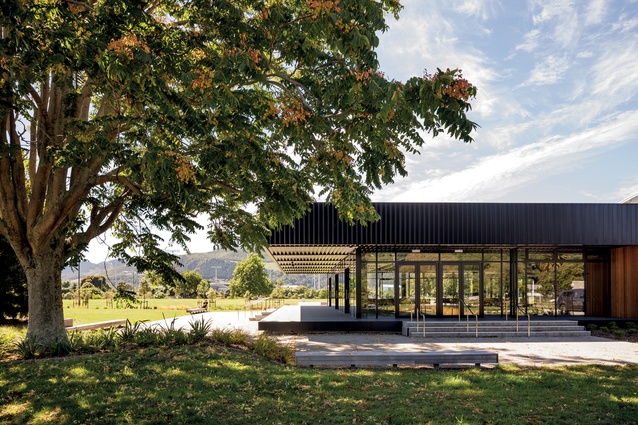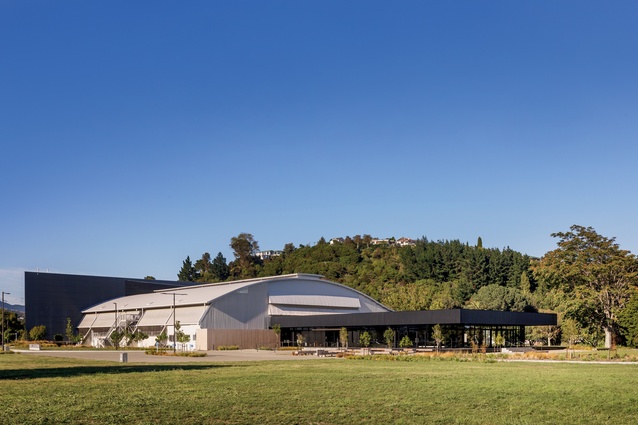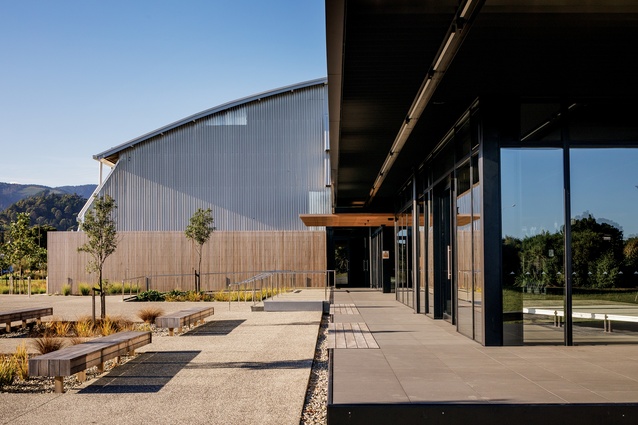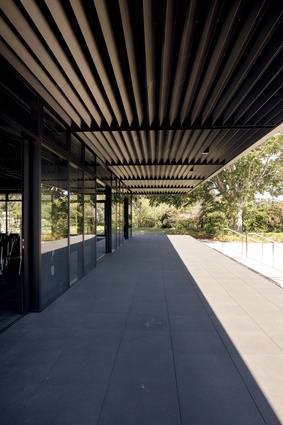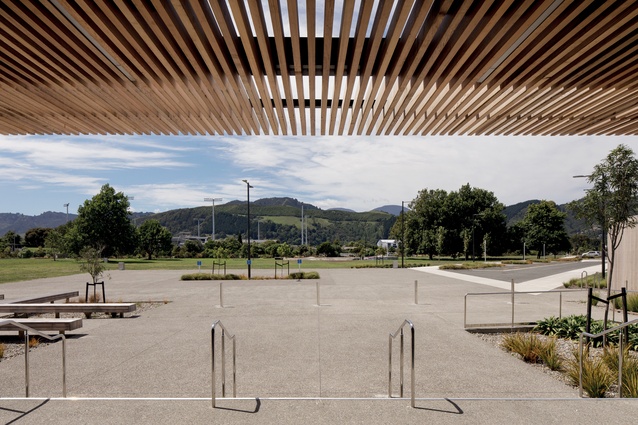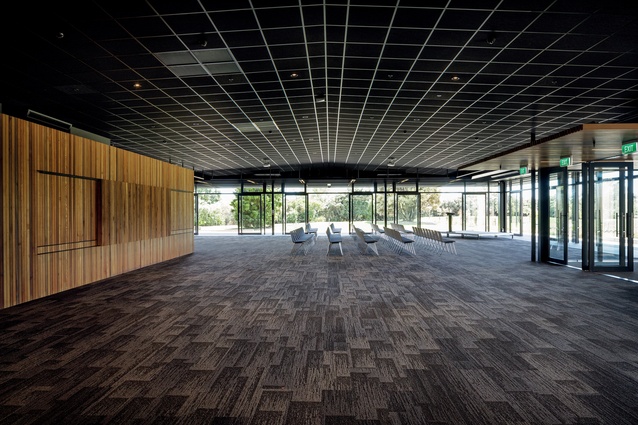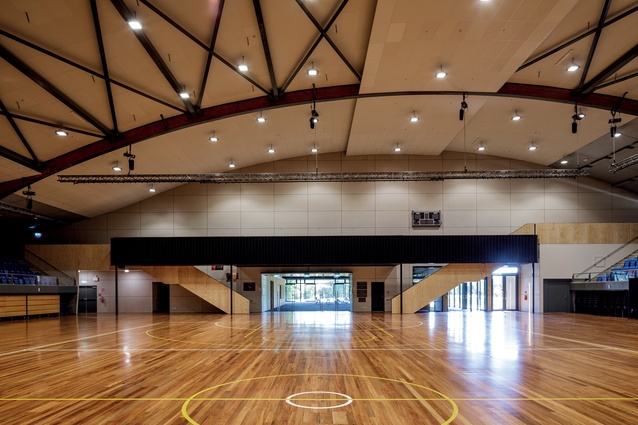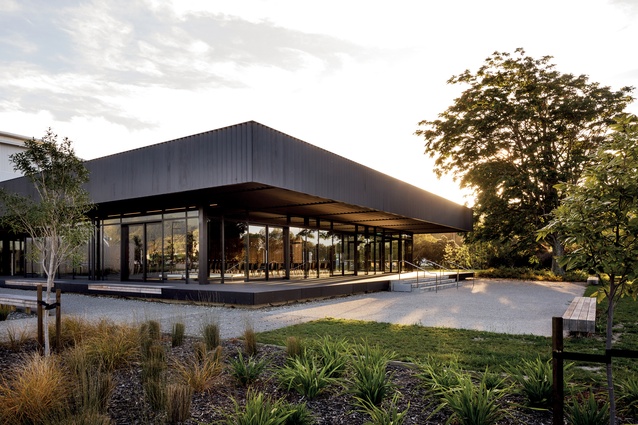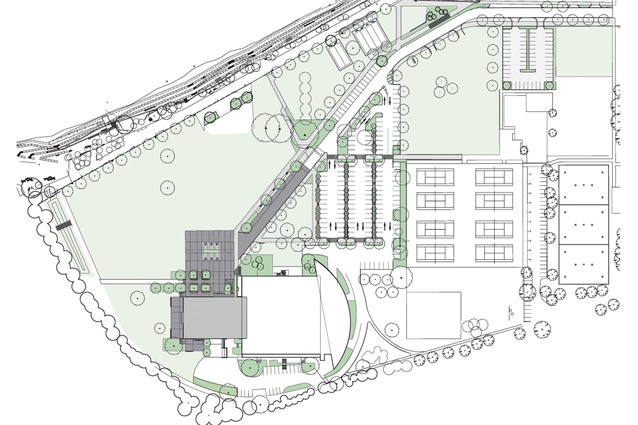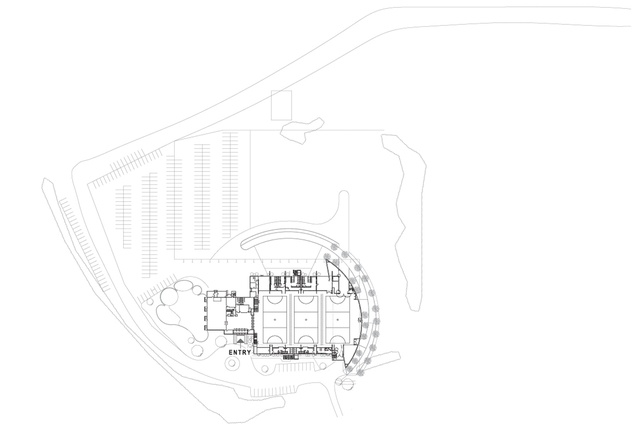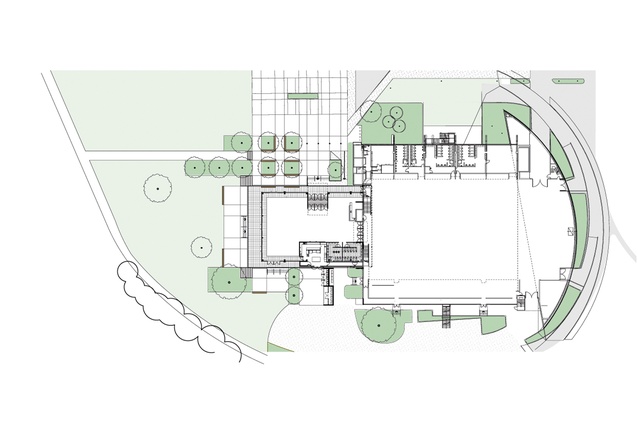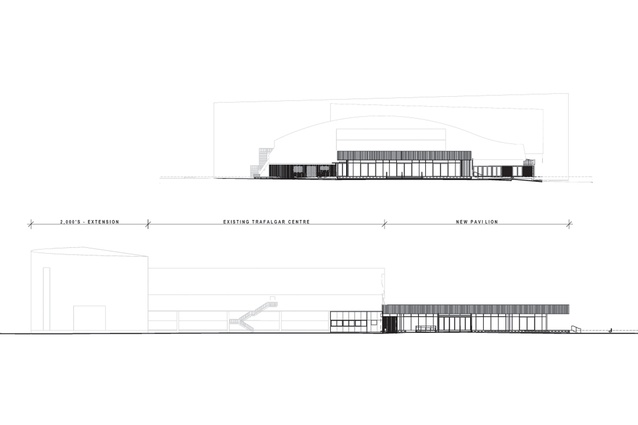Staying alive: Trafalgar Centre Reinhabitation
Irving Smith Architects has designed an elegant, black pavilion and surrounds to create a real civic dimension to Nelson’s major indoor sports, events and performance venue.
Completed in 1973, ‘The Hanger’ at Nelson’s Trafalgar Centre was originally designed by architect Alex Bowman, known for bringing international modernism to Nelson back in the 1960s. This stadium has undergone a number of alterations over the years; most notable is the Southern Extension, a crescent-shaped ‘bookend’ form designed by Arthouse Architects and completed in 2009.
However, the stadium became seismically challenged after major earthquakes rocked the South Island. It had been constructed from a series of timber arches sited on badly reclaimed land and the complex was officially closed in 2014.
Nelson-based studio Irving Smith Architects (ISA) has recently completed a ‘reinhabitation’ of the complex, which included a new entry pavilion, seismic strengthening of the existing buildings, and a masterplan to reconfigure the scheme and the adjacent Rutherford Park. The architects needed to address its location, as the first public building on the recently developed Maitai River Walkway: a picturesque, 8km-long pedestrian public link from the sea, through the city and to the Maitai Valley. The realignment was also important because the previous masterplan appeared to block off the natural route from the city and to relegate it to the western side, away from the river and the park, which is used for outdoor events.
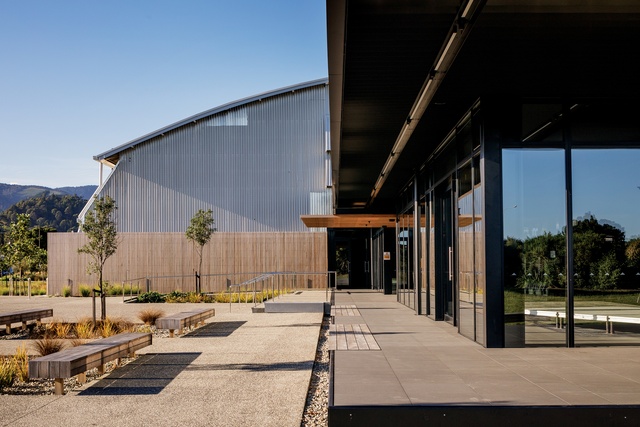
“We had to make everything work really hard,” explains Jeremy Smith, director at ISA. “We started with fixing the basketball stadium [home of the Nelson Giants] and solving how you transition from the outside to the inside of the pavilion, creating an informal marae ātea (public forum) space as you go into the building. The pavilion has a great verandah space with a massive eave, which spills out in different directions into the park so it can be used in different ways.
They can put a tent out front that has a relationship to the building, for example. It also has space around it now, which it didn’t have before.” In a clever move, the architects have moved the car park to the south – a logical solution – so, now, the landscaped marae ātea space indicates where the front door is and makes access easier.
The edges of the building are also neatly designed to act as seating at ground-floor level while inside the entrance is a space which Smith describes as “without a direct function”. “Essentially, it’s an ante-room: a place for gathering and creating anticipation before you enter the stadium, as well as providing refreshments, toilets and ticketing.”
This space can comfortably hold 250 people standing or 100 to 120 people seated for dinner, although it held about 400 people for a Green Party conference. ISA director Andrew Irving dryly jokes that: “The bike parks are terribly inadequate for a Green Party launch!”
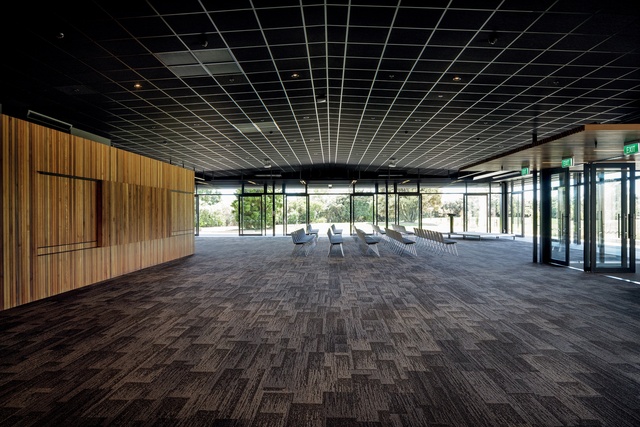
There has been much local discussion about the blackness of the new low-slung pavilion because, apparently, black is not a typical colour in which to clad a regional public building. But, while indeed it is a large black form, its aluminium cladding has a folded profile that reflects light off its surface to create a pinstriped effect and, externally, the glazing mirrors the greenness of its park-like surrounds and provides a garden view from the inside.
Internally, black ceiling tiles also add patterns and plays of light. “While the building is black, we haven’t created any flat surfaces – they’re all faceted in some way to create different textures.”
The site upon which the Trafalgar Centre sits is between a stream and a river and consists of uncertified fill, making it prone to liquefaction. Thus, the works to the arched stadium structure were designed to minimise risk of collapse, explains Irving. “It achieves approximately 75 per cent of NBS and was designed by Holmes Consulting in Christchurch, with geotech design by Arup, London. Deep soil mixing, by Arup, restricts the amount of lateral movement likely in a seismic event and liquefaction on site.”
The southern extension is seismically separated from the original stadium by these works. Holmes included a series of buckling-restrained braces (BRBs) to increase the ductility of the structure, replacing former ReidBrace elements. “This is new technology,” Irving adds.
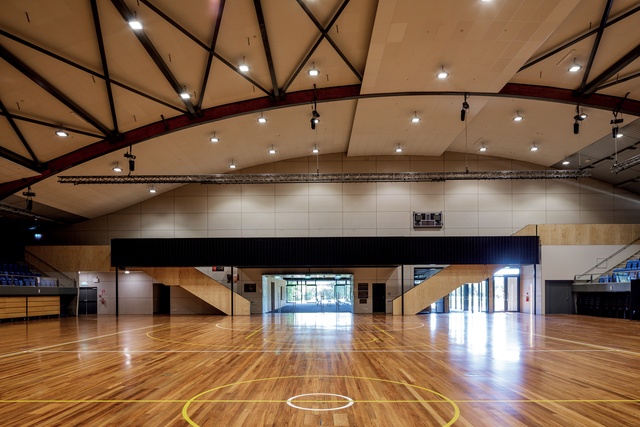
The two sides of the arch are held together by arrays of post-tensioned strand installed in the existing joist space. “New, wide foundations allow the building to float,” continues Irving. “This responds to existing narrow foundations and piles that are deep but skinny and likely to fail in a seismic/liquefaction-type event. The strand ties the two sides together. New cross-bracing and steel facings reinforce the glulam arches that form the superstructure of the stadium.”
The architects worked within a constrained budget so the structural strengthening and pavilion are “raw and elementally finessed around function”. Strengthening to ground and existing structure came to $7 million, while the new building and covered exterior areas, kitchen, a reworking of the stairs and works to the northern end of the stadium cost $3 million, and civil works were a further $4 million.
The Trafalgar Centre is typical of regional public buildings in that it has many jobs to do – from hosting children’s volleyball games to major music events – so it needed to be highly adaptable. The stadium, in full basketball game mode, now caters for up to 2,500 people and can be used as two tennis courts or four basketball courts; in new performance theatre mode, it holds up to 1,200 people.
The centre also has a history of hosting major cultural and entertainment events, exhibitions and conferences, as well as community events; ISA had to consider this in its concept. “You have to think about all the ways in which the building can be used, and the opportunities it offers, and you don’t always know what’s coming in the future.”
The art of this project is that, even though it’s a seemingly simple pavilion form, the architects have had to overcome numerous major challenges to achieve it. Fighting to put the car park “somewhere sensible” was an interesting challenge cited by Smith. But smaller details were equally important, like the faceted angle into the soffit, which integrates services into the angles on both sides of the glass, tucking everything away neatly.
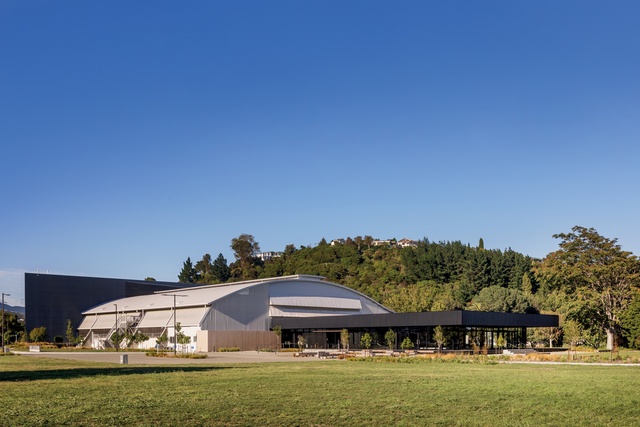
The scale was also important in relation to both the huge existing building and to the much-smaller human scale of people occupying the place. “We tried to reduce the scale to the size of a single person, who does yoga on the verandah every morning,” says Smith. “We were given massive shapes to work with so it was about massaging the scale down to that level.”
So, what is the appeal of working on regional projects like this? “It’s because they’re important,” states Smith. “The gap between where people live and the city is much closer and, when you live in a smaller town, there is a responsibility to keep things alive. To attract people to our regional centres, they need Trafalgar Centres. They need facilities and they need to be kept going – and the only way to keep them going is to keep them current.”
“What we’ve done here, which is different to what’s been done before, is that we haven’t prescribed how it should be used, allowing us to have more choice. Here, we’ve corrected the building to add something more than it had before. I guess, in a strange kind of way, the earthquake strengthening of these buildings opens the door for the regeneration of smaller towns. It’s terrible that these buildings can’t be used and that they need money to fix them. But, so be it; they’re important buildings for the community – and there’s also an opportunity. That’s the silver lining.”

